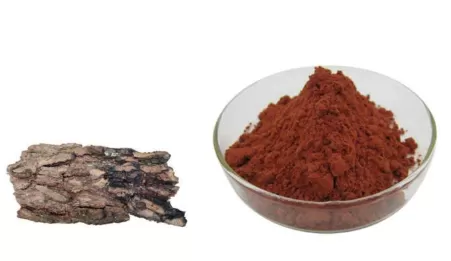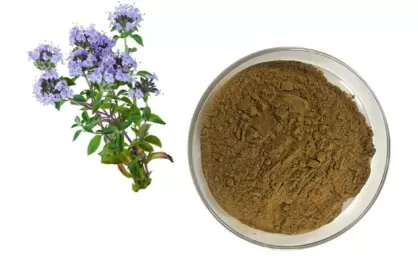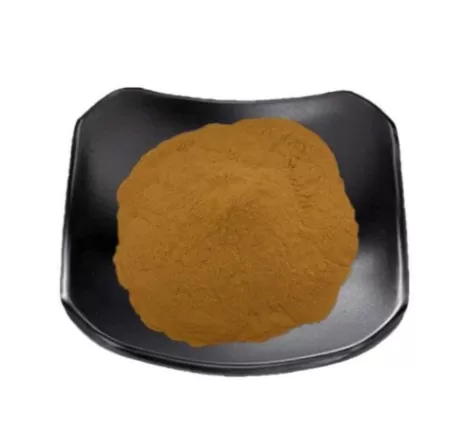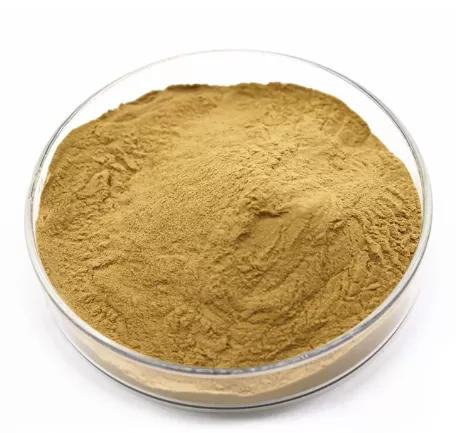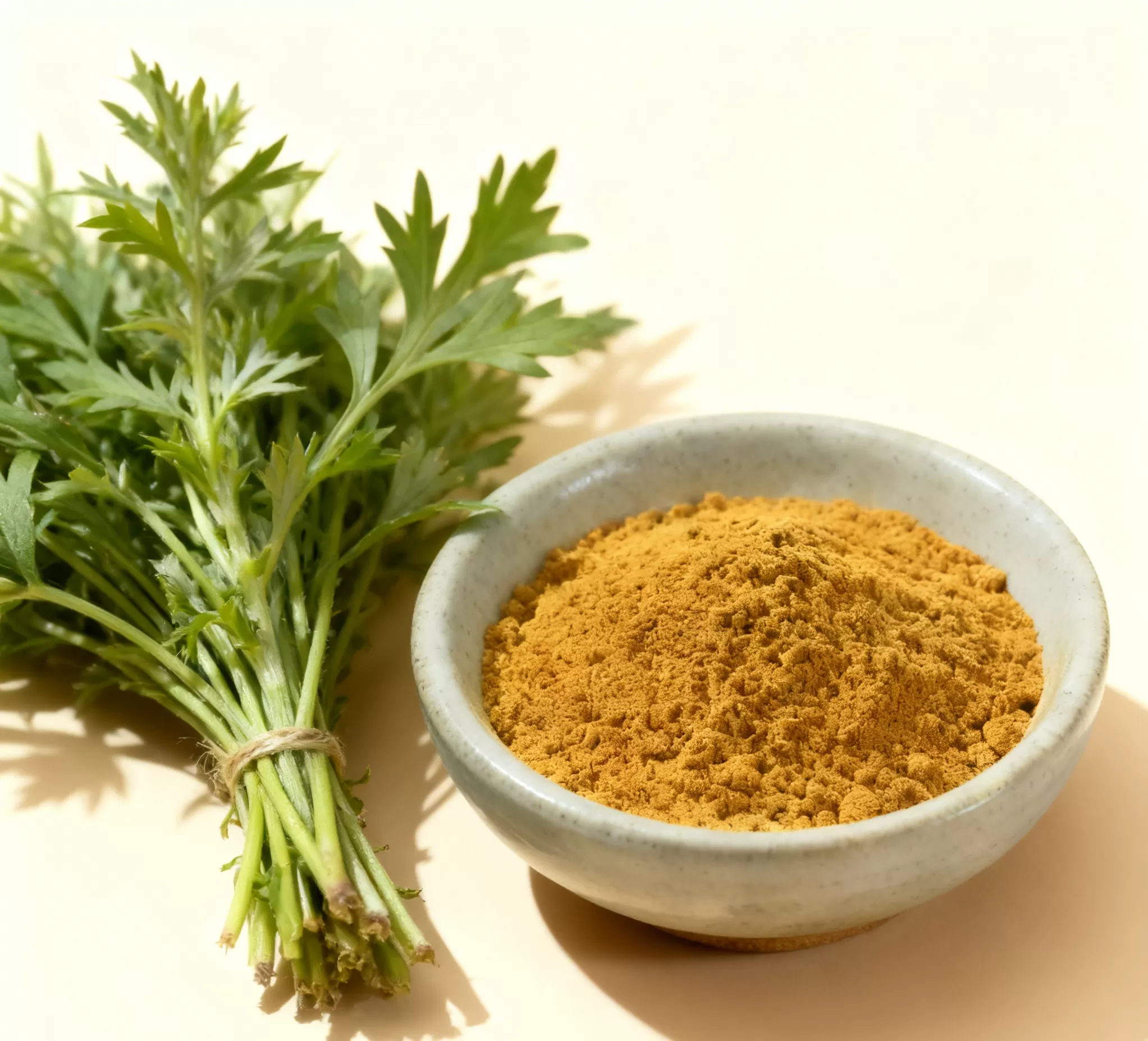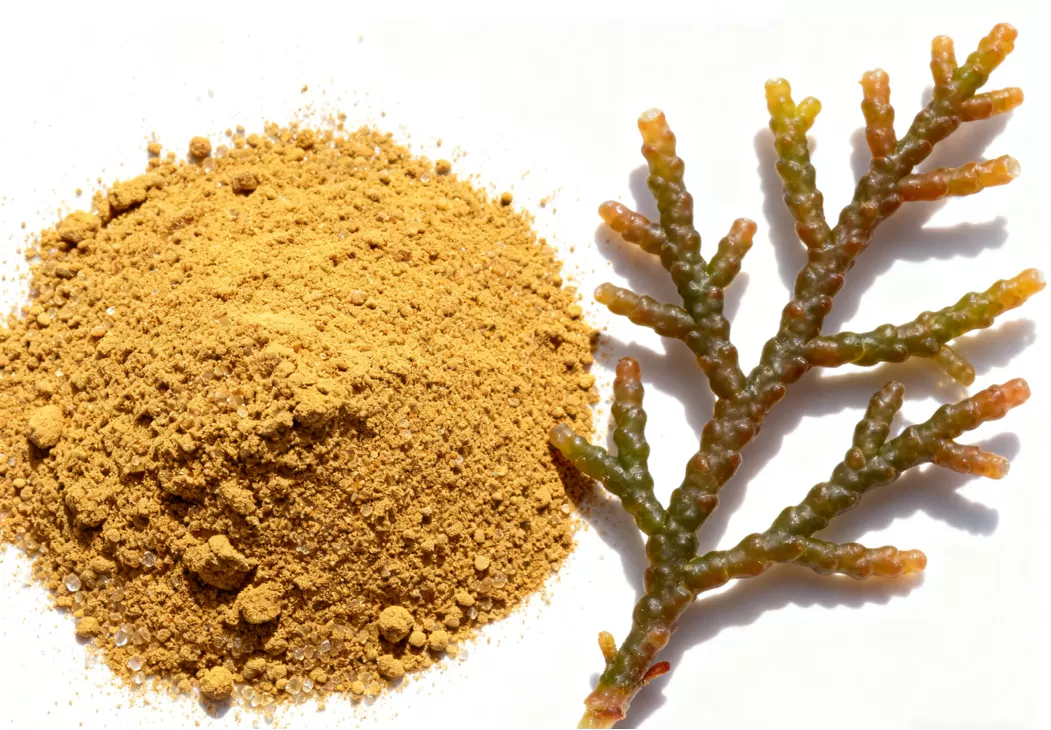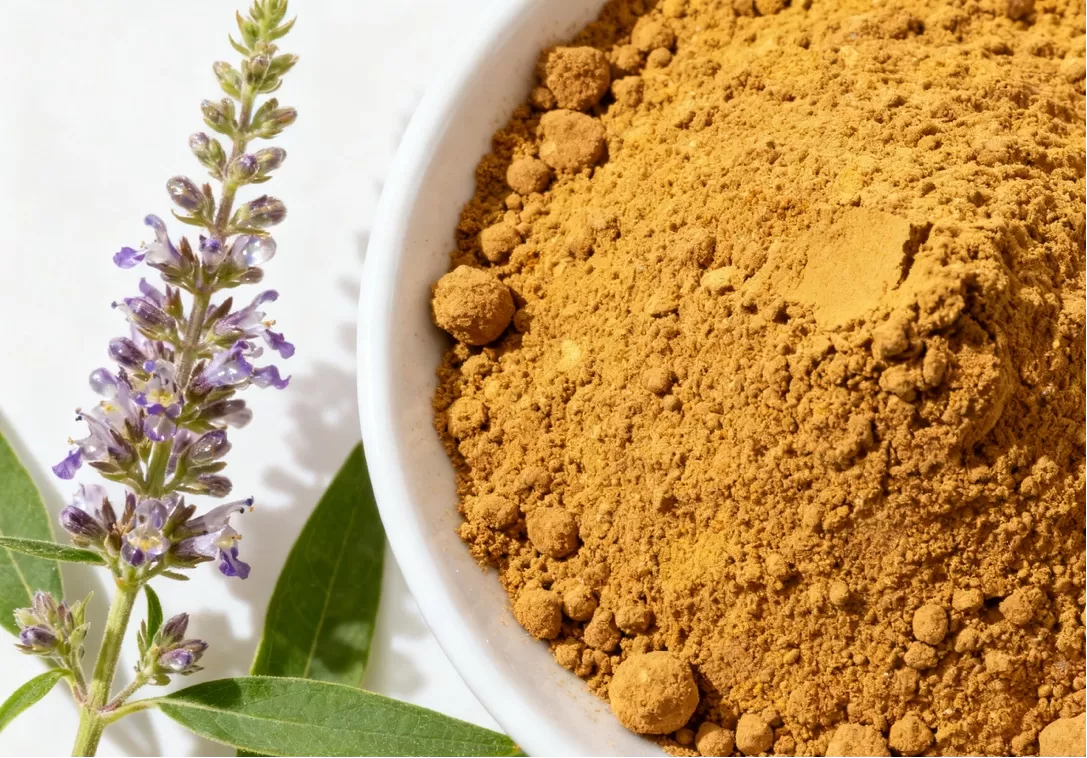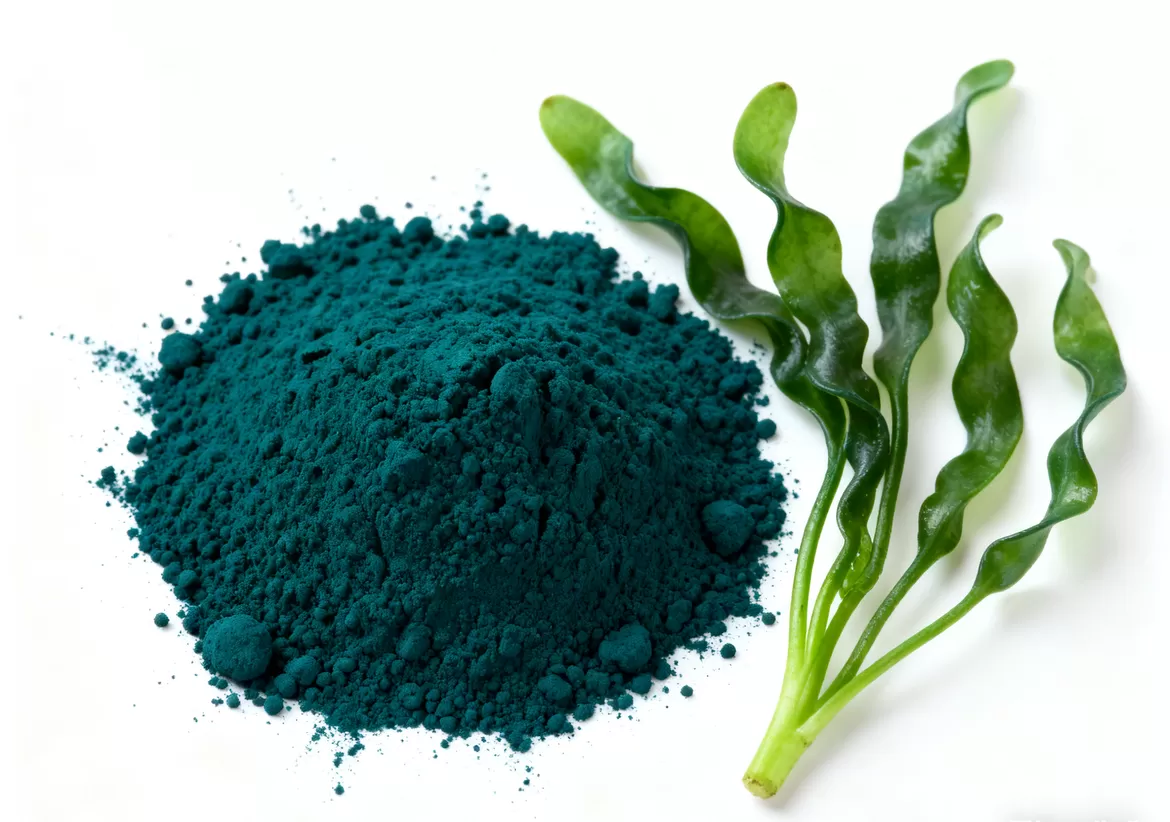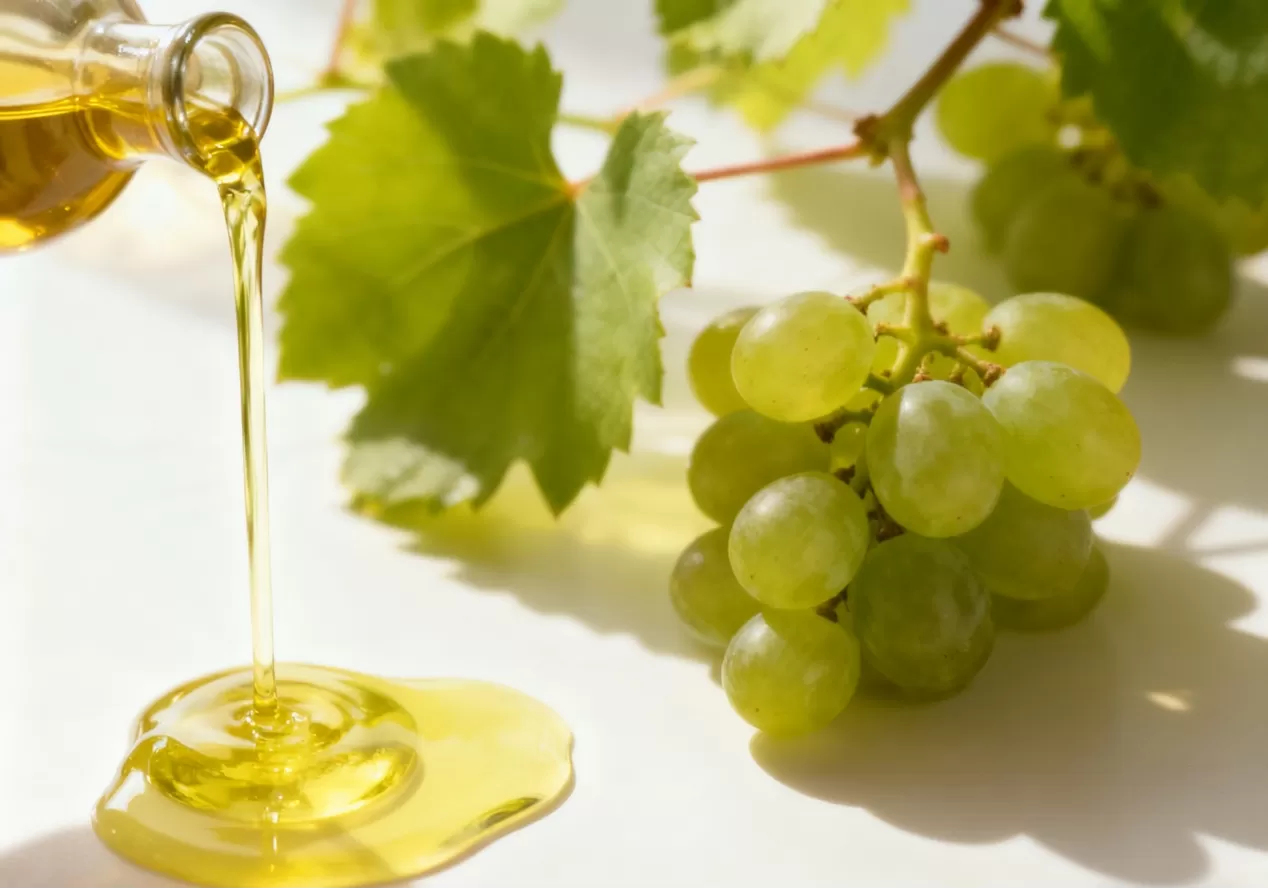- 0086-571-85302990
- sales@greenskybio.com
plant extract manufacturer
2023-09-24
1. The Role of Plant Extract Manufacturers
1. The Role of Plant Extract Manufacturers
Plant extract manufacturers play a pivotal role in the global market, bridging the gap between nature's bounty and the demands of various industries. They are responsible for the extraction, processing, and supply of plant-based compounds that are used in a wide array of applications, from food and beverages to pharmaceuticals and cosmetics.
1.1 Sourcing and Cultivation
Manufacturers often work closely with farmers and botanical experts to source high-quality plant materials. They may also engage in sustainable cultivation practices to ensure a consistent supply of raw materials that meet the required specifications.
1.2 Extraction and Processing
The core function of plant extract manufacturers is the extraction of bioactive compounds from plants. This involves using various extraction methods, such as solvent extraction, steam distillation, and cold pressing, to obtain concentrated forms of plant materials. The extracted compounds are then further processed and standardized to meet industry-specific requirements.
1.3 Quality Assurance
Ensuring the quality and safety of plant extracts is a critical aspect of a manufacturer's role. This includes implementing strict quality control measures, adhering to regulatory standards, and conducting regular testing to verify the purity, potency, and efficacy of the products.
1.4 Research and Development
Innovation is key in the plant extract industry, with manufacturers continuously investing in research and development to discover new applications, improve extraction techniques, and develop novel products. This helps them stay competitive and meet the evolving needs of their customers.
1.5 Marketing and Distribution
Plant extract manufacturers also play a crucial role in marketing and distributing their products to various industries. This involves building strong relationships with customers, understanding their needs, and providing tailored solutions that meet their specific requirements.
1.6 Regulatory Compliance
Compliance with local and international regulations is essential for plant extract manufacturers. This includes obtaining necessary certifications, adhering to good manufacturing practices (GMP), and ensuring that their products meet the safety and efficacy standards set by regulatory bodies.
1.7 Environmental Stewardship
As stewards of the environment, plant extract manufacturers are committed to sustainable practices that minimize their ecological footprint. This includes responsible sourcing, waste reduction, and the use of eco-friendly materials and processes.
1.8 Education and Outreach
Educating the public and industry stakeholders about the benefits of plant extracts and promoting awareness about their responsible use is another important role of plant extract manufacturers. This helps build trust and foster a better understanding of the industry's contributions to society.
In summary, plant extract manufacturers are multifaceted entities that play a critical role in the supply chain, from sourcing raw materials to delivering high-quality, standardized products to various industries. Their commitment to quality, innovation, and sustainability is essential for the continued growth and success of the plant extract market.
2. Types of Plant Extracts
2. Types of Plant Extracts
Plant extracts are derived from various parts of plants, including leaves, roots, flowers, fruits, seeds, and barks. They are used for their medicinal, nutritional, and aromatic properties. The diversity of plant extracts is vast, catering to a wide range of applications in different industries. Here are some of the most common types of plant extracts:
1. Flavonoid Extracts: These are a group of plant-based compounds that have antioxidant properties and are often used in dietary supplements and pharmaceuticals.
2. Alkaloid Extracts: Derived from plants, alkaloids have a bitter taste and are used in medicine for their therapeutic effects, such as caffeine from coffee beans or morphine from opium poppies.
3. Tannin Extracts: Tannins are a class of naturally occurring polyphenols that are used in tanning leather, brewing beer, and as astringents in cosmetics and personal care products.
4. Essential Oils: These are volatile aromatic compounds found in many plants, used extensively in the perfumery, food, and pharmaceutical industries.
5. Carotenoid Extracts: Carotenoids are pigments found in plants and algae that are used for their color and health benefits, such as beta-carotene from carrots.
6. Polyphenol Extracts: These are a large group of naturally occurring compounds with antioxidant properties, found in many fruits, vegetables, and beverages like tea and wine.
7. Glycoside Extracts: Glycosides are compounds that consist of a sugar molecule attached to a non-carbohydrate moiety, which can be hydrolyzed to release the sugar.
8. Saponin Extracts: Saponins are found in many plants and are known for their foaming properties, used in soaps and detergents.
9. Resin Extracts: Plant resins are sticky substances used in varnishes, adhesives, and as a source of natural chemicals.
10. Protein Extracts: Derived from plant sources, these are used in the food industry for their nutritional value and in cosmetics for their moisturizing properties.
11. Fatty Acid Extracts: Plant-based fatty acids are used in the food industry for their health benefits and in the cosmetic industry for their skin care properties.
12. Pectin Extracts: Pectin is a carbohydrate found in many fruits, used as a gelling agent in jams and jellies and as a dietary fiber supplement.
13. Sterol Extracts: Plant sterols are used in the food industry to lower cholesterol levels and in cosmetics for their skin softening properties.
14. Terpenoid Extracts: Terpenoids are a large and diverse class of naturally occurring organic chemicals derived from plants, used for their fragrance and flavor.
15. Anthocyanin Extracts: These are water-soluble vacuolar pigments that may have antioxidant properties and are responsible for the red, blue, and purple colors in plants.
Each type of plant extract has unique properties and applications, making them valuable in various industries such as pharmaceuticals, cosmetics, food and beverages, agriculture, and more. The selection of the right plant extract depends on the specific needs and desired outcomes of the end product.
3. Extraction Methods and Technologies
3. Extraction Methods and Technologies
The process of extracting plant compounds is a critical aspect of plant extract manufacturing, as it directly impacts the quality, purity, and efficacy of the final product. Various extraction methods and technologies are employed to ensure optimal results. Here’s a detailed look at some of the most common techniques used in the industry:
1. Solvent Extraction: This is one of the oldest and most widely used methods. Solvents such as water, ethanol, or hexane are used to dissolve the desired compounds from plant material. The solvent is then evaporated, leaving behind the concentrated extract.
2. Steam Distillation: Particularly useful for extracting volatile compounds like essential oils, steam distillation involves passing steam through plant material, which causes the volatile compounds to evaporate with the steam. The mixture is then cooled and condensed, separating the oil from the water.
3. Cold Pressing: This method is used for extracting oils from fruits like olives and citrus. The plant material is pressed at low temperatures to avoid damaging the delicate compounds. The oil is then separated from the water and solids.
4. Supercritical Fluid Extraction (SFE): SFE uses supercritical fluids, typically carbon dioxide, which has properties between a liquid and a gas. This method allows for the extraction of compounds at lower temperatures and pressures, preserving heat-sensitive compounds and yielding high-purity extracts.
5. Ultrasonic Extraction: Ultrasonic waves are used to disrupt plant cell walls, releasing the compounds into the solvent. This method is efficient and can reduce the extraction time significantly.
6. Enzymatic Extraction: Enzymes are used to break down the plant material, making it easier to extract the desired compounds. This method is particularly useful for extracting bioactive compounds from complex plant matrices.
7. Maceration: A simple and traditional method where plant material is soaked in a solvent for an extended period. The solvent slowly dissolves the compounds, which are then separated from the plant material.
8. Microwave-Assisted Extraction (MAE): MAE uses microwave energy to heat the solvent, accelerating the extraction process. This method is known for its speed and efficiency.
9. High-Pressure Processing (HPP): HPP uses high pressure to break down plant cell walls, allowing for the extraction of compounds without the use of heat or solvents.
10. Membrane Technology: This involves the use of semipermeable membranes to separate compounds based on their size or charge, often used in the purification of extracts.
11. Freeze Drying: Also known as lyophilization, this method involves freezing the plant material and then reducing the surrounding pressure to allow the frozen water to sublime directly from the solid to the gas phase, leaving behind a dry, concentrated extract.
Each of these methods has its advantages and limitations, and the choice of extraction method depends on the specific plant material, the target compounds, and the desired purity and yield. Advances in technology continue to improve the efficiency and effectiveness of these methods, ensuring that plant extract manufacturers can produce high-quality products for a wide range of applications.
4. Quality Control and Standards
4. Quality Control and Standards
Quality control is a critical component in the plant extract manufacturing process, ensuring that the final products meet the required safety, efficacy, and regulatory standards. Here's a detailed look at the various aspects of quality control and the standards that plant extract manufacturers must adhere to:
4.1 Importance of Quality Control
- Safety Assurance: Ensuring that the plant extracts are free from harmful substances and contaminants.
- Consistency: Guaranteeing that each batch of extracts is uniform in terms of composition and potency.
- Regulatory Compliance: Adhering to international and local regulations that govern the production and sale of plant extracts.
4.2 Quality Control Measures
- Raw Material Sourcing: Selecting high-quality raw materials from reliable sources.
- Testing: Conducting thorough tests on raw materials, intermediates, and finished products.
- Standard Operating Procedures (SOPs): Implementing SOPs for every step of the manufacturing process to maintain consistency.
4.3 Regulatory Standards
- Good Manufacturing Practices (GMP): Adherence to GMP ensures that plant extracts are produced in a controlled environment that minimizes the risk of contamination.
- ISO Certifications: Obtaining ISO certifications, such as ISO 9001 for quality management systems, demonstrates a commitment to quality.
- Organic and Fair Trade Certifications: These certifications verify that the plant extracts are produced using ethical and environmentally friendly practices.
4.4 Analytical Techniques
- High-Performance Liquid Chromatography (HPLC): Used to determine the purity and composition of plant extracts.
- Gas Chromatography-Mass Spectrometry (GC-MS): Employed for the identification and quantification of volatile compounds.
- Nuclear Magnetic Resonance (NMR): Provides detailed information about the molecular structure of plant extracts.
4.5 Traceability and Documentation
- Batch Tracking: Each batch of plant extract should be traceable from raw material to finished product.
- Documentation: Maintaining detailed records of all processes, tests, and results to ensure transparency and accountability.
4.6 Continuous Improvement
- Feedback Loops: Implementing systems to gather feedback from customers and regulatory bodies to improve products and processes.
- Investment in Research and Development: Continuously investing in R&D to enhance extraction methods and develop new products.
4.7 Challenges in Quality Control
- Variability in Raw Materials: Natural plant materials can vary in composition, making it challenging to maintain consistent product quality.
- Adapting to Regulatory Changes: Keeping up with evolving regulations in different markets can be complex and resource-intensive.
4.8 Conclusion
Quality control and adherence to standards are non-negotiable for plant extract manufacturers. By implementing robust quality control measures and staying abreast of regulatory changes, manufacturers can ensure the safety, efficacy, and reliability of their products, ultimately building trust with consumers and partners in the industry.
5. Applications of Plant Extracts in Various Industries
5. Applications of Plant Extracts in Various Industries
Plant extracts have found their way into a multitude of industries, thanks to their diverse range of properties and applications. Here's a look at some of the key areas where plant extracts are making a significant impact:
Pharmaceutical Industry:
Plant extracts are widely used in the development of pharmaceutical products, both as active ingredients and as supportive compounds. They are the basis for many traditional medicines and are increasingly being incorporated into modern drug formulations for their therapeutic properties.
Cosmetics and Personal Care:
The cosmetic industry leverages plant extracts for their skin-friendly properties, such as antioxidants, anti-inflammatory agents, and natural fragrances. They are used in a variety of products including creams, lotions, shampoos, and perfumes.
Food and Beverage Industry:
Plant extracts are used to add flavor, color, and nutritional value to food and beverages. They are common in the production of natural food colorings, flavor enhancers, and health supplements.
Agricultural Industry:
In agriculture, plant extracts are used as natural pesticides and growth promoters. They can help protect crops from pests and diseases while promoting healthier growth, thus reducing the reliance on synthetic chemicals.
Nutritional Supplements:
Many nutritional supplements contain plant extracts for their health benefits. These can range from vitamins and minerals derived from plants to compounds that support immune function and overall well-being.
Textile Industry:
Plant extracts are used in the textile industry for dyeing and finishing processes. Natural dyes derived from plants offer a sustainable and eco-friendly alternative to synthetic dyes.
Household Products:
In household products, plant extracts can be found in cleaning agents, air fresheners, and insect repellents. They provide natural alternatives to chemical-based products, appealing to consumers who prefer greener options.
Floral and Aromatherapy Industry:
Essential oils and fragrances derived from plant extracts are a cornerstone of the floral and aromatherapy industries. They are used for their aromatic properties and are believed to have various therapeutic benefits.
Environmental and Biotechnology:
Plant extracts are also utilized in environmental applications such as bioremediation, where they can help in the degradation of pollutants. In biotechnology, they are used in research and development for new bioactive compounds.
The versatility of plant extracts is a testament to the ingenuity of manufacturers who are continually exploring new ways to harness the power of nature for various applications. As research continues to uncover more about the properties of different plants, the applications of plant extracts are likely to expand even further.
6. Challenges and Opportunities in the Plant Extract Market
6. Challenges and Opportunities in the Plant Extract Market
The plant extract market is a dynamic and growing industry, yet it is not without its challenges and opportunities. As the demand for natural products continues to rise, manufacturers must navigate a complex landscape of regulatory standards, market competition, and consumer expectations.
Challenges
1. Regulatory Compliance: Plant extract manufacturers must adhere to strict regulations regarding product safety, labeling, and quality. Compliance with international standards such as those set by the FDA, EU, and other regulatory bodies can be complex and costly.
2. Consistency and Standardization: Ensuring the consistency of plant extracts is a significant challenge due to the natural variability in plant materials. This variability can affect the potency, efficacy, and safety of the final product.
3. Supply Chain Management: Sourcing high-quality raw materials is crucial. However, factors such as climate change, political instability, and economic fluctuations can impact the availability and pricing of these materials.
4. Technological Advancements: Keeping pace with the latest extraction technologies is essential for maintaining a competitive edge. However, investing in new technologies can be expensive and requires ongoing training and development.
5. Market Competition: The market is crowded with both large multinational companies and small, niche players. Differentiating products and maintaining a unique selling proposition can be challenging.
6. Consumer Awareness and Education: Consumers are increasingly interested in the origin and processing of plant extracts. Educating consumers about the benefits and uses of plant extracts is essential for market growth.
Opportunities
1. Growing Demand for Natural Products: There is a strong trend towards natural, organic, and sustainable products. This presents a significant opportunity for plant extract manufacturers to capitalize on this trend.
2. Health and Wellness Trends: The rise in health consciousness and the desire for natural remedies and supplements offer a growing market for plant extracts with proven health benefits.
3. Innovation in Extraction Technologies: Advances in extraction methods, such as supercritical fluid extraction and ultrasound-assisted extraction, can lead to higher yields, better quality, and more efficient production processes.
4. Diversification of Applications: Plant extracts are used in a wide range of industries, from food and beverages to cosmetics and pharmaceuticals. Exploring new applications can open up additional market segments.
5. Global Market Expansion: There is potential for growth in emerging markets where the demand for plant extracts is increasing due to rising incomes and changing consumer preferences.
6. Sustainability and Eco-Friendly Practices: Consumers are increasingly concerned about the environmental impact of products. Manufacturers that adopt sustainable and eco-friendly practices can differentiate themselves and appeal to this growing market segment.
7. Partnerships and Collaborations: Forming strategic partnerships with research institutions, other manufacturers, and distributors can lead to new product development, market expansion, and shared resources.
By addressing these challenges and capitalizing on the opportunities, plant extract manufacturers can position themselves for success in a competitive and evolving market.
7. Future Trends and Innovations in Plant Extract Manufacturing
7. Future Trends and Innovations in Plant Extract Manufacturing
The plant extract manufacturing industry is poised for significant growth and innovation in the coming years. As global demand for natural and organic products continues to rise, manufacturers are expected to adapt and evolve to meet these needs. Here are some of the future trends and innovations that are likely to shape the industry:
1. Sustainability and Eco-Friendly Practices: With increasing awareness about environmental issues, there is a growing emphasis on sustainable and eco-friendly practices in manufacturing. This includes using renewable resources, reducing waste, and minimizing the carbon footprint.
2. Advanced Extraction Technologies: Innovations in extraction technologies are expected to improve the efficiency and effectiveness of plant extract production. Techniques such as supercritical fluid extraction, ultrasound-assisted extraction, and microwave-assisted extraction are likely to become more prevalent.
3. Personalized Medicine and Nutraceuticals: The trend towards personalized medicine and the use of nutraceuticals is driving the demand for customized plant extracts that cater to specific health needs and preferences.
4. Bioactive Compounds Research: Ongoing research into the bioactive compounds found in plants will lead to the discovery of new applications and uses for plant extracts, potentially opening up new markets.
5. Regulatory Compliance and Standardization: As the industry grows, so does the need for stringent regulatory compliance and standardization to ensure the safety and efficacy of plant extracts. Manufacturers will need to invest in quality control and meet international standards.
6. Digitalization and Automation: The integration of digital technologies and automation in the manufacturing process can lead to increased efficiency, reduced human error, and better traceability of products.
7. Blockchain for Traceability: The use of blockchain technology for traceability can provide transparency in the supply chain, ensuring that plant extracts are ethically sourced and processed.
8. Nanotechnology in Delivery Systems: The application of nanotechnology in the formulation of plant extracts can enhance their bioavailability and effectiveness, making them more potent and easier to incorporate into various products.
9. Synthetic Biology: Advances in synthetic biology could allow for the production of plant extracts through engineered microorganisms, potentially reducing the need for large-scale cultivation and extraction processes.
10. Consumer Education and Transparency: Manufacturers will need to focus on educating consumers about the benefits and uses of plant extracts while maintaining transparency about their production methods and ingredients.
11. Expansion into New Markets: As the reputation of plant extracts grows, manufacturers will explore new markets and applications, such as in the cosmetic, pharmaceutical, and food and beverage industries.
12. Collaboration and Partnerships: Collaborations between plant extract manufacturers, research institutions, and other stakeholders can lead to shared knowledge and resources, fostering innovation and growth.
The future of plant extract manufacturing is bright, with a strong potential for growth and innovation. By embracing these trends and investing in research and development, manufacturers can ensure that they remain competitive and meet the evolving needs of consumers and industries alike.
8. Case Studies of Successful Plant Extract Manufacturers
8. Case Studies of Successful Plant Extract Manufacturers
8.1 Introduction to Case Studies
In this section, we delve into the stories of successful plant extract manufacturers that have made significant impacts in their respective fields. These case studies provide insights into the strategies, innovations, and business models that have contributed to their success.
8.2 XYZ Plant Extracts: A Leader in Sustainable Practices
XYZ Plant Extracts is a company that has gained recognition for its commitment to sustainable and eco-friendly practices. By utilizing organic farming methods and implementing green technologies, XYZ has managed to reduce its environmental footprint while producing high-quality plant extracts.
8.3 BioNatura: Pioneering Innovation in Extraction Technologies
BioNatura has been at the forefront of innovation in the plant extract industry. The company has developed proprietary extraction technologies that allow for the efficient and effective extraction of bioactive compounds from plants. This has led to the production of highly potent and pure plant extracts that are in high demand across various industries.
8.4 GreenLeaf Extracts: Expanding Global Reach
GreenLeaf Extracts is a company that has successfully expanded its global reach by establishing partnerships with local farmers and suppliers in different regions. This has allowed the company to source a diverse range of plant materials and cater to the specific needs of various markets.
8.5 HerbaLife: Integrating Quality Control and Standards
HerbaLife is a prime example of a plant extract manufacturer that places a strong emphasis on quality control and standards. The company has implemented rigorous quality assurance processes and has obtained multiple certifications, ensuring that its products meet the highest industry standards.
8.6 FloraTech: Diversifying Applications in Various Industries
FloraTech has demonstrated the versatility of plant extracts by successfully applying them in various industries, including food and beverages, cosmetics, and pharmaceuticals. The company's innovative approach to product development has allowed it to create unique and effective formulations that cater to the needs of different industries.
8.7 TerraBotanicals: Embracing Future Trends and Innovations
TerraBotanicals is a company that has embraced future trends and innovations in the plant extract manufacturing industry. By investing in research and development, the company has been able to develop novel plant extracts and applications that are at the forefront of the industry.
8.8 Conclusion of Case Studies
These case studies highlight the diverse strategies and approaches that have contributed to the success of various plant extract manufacturers. By focusing on sustainability, innovation, quality control, and diversification, these companies have been able to establish themselves as leaders in the industry and pave the way for future growth and development.
9. Conclusion and Outlook
9. Conclusion and Outlook
The plant extract manufacturing industry plays a pivotal role in the global market, providing natural, sustainable, and innovative solutions across various sectors. As we conclude our exploration of this dynamic field, it's clear that the demand for plant extracts is driven by a growing awareness of health, environmental concerns, and the desire for natural alternatives to synthetic products.
The Role of Plant Extract Manufacturers has evolved significantly, with a focus on not only producing high-quality extracts but also ensuring the sustainability of their sourcing and the ethical treatment of workers involved in the supply chain.
Types of Plant Extracts are incredibly diverse, ranging from medicinal herbs to food flavorings and colorants. This diversity is a testament to the versatility of plants and the potential for further discovery and innovation.
Extraction Methods and Technologies have advanced, allowing for more efficient and effective processes that can capture the full spectrum of beneficial compounds found in plants. Innovations in this area are crucial for maintaining the quality and potency of plant extracts.
Quality Control and Standards are essential to ensure the safety, efficacy, and consistency of plant extracts. Regulatory bodies and industry standards play a critical role in guiding manufacturers to meet these high expectations.
Applications of Plant Extracts in Various Industries are extensive, from pharmaceuticals and cosmetics to agriculture and food products. The breadth of applications underscores the importance of plant extracts in contributing to healthier and more sustainable products.
Challenges and Opportunities in the Plant Extract Market coexist, with issues such as climate change, biodiversity loss, and market volatility presenting obstacles. However, these challenges also spur innovation and the development of new technologies and business models.
Future Trends and Innovations in Plant Extract Manufacturing point towards a more integrated approach, combining traditional knowledge with modern science. The integration of AI and machine learning in the discovery of new plant extracts and the optimization of extraction processes is particularly promising.
Case Studies of Successful Plant Extract Manufacturers have demonstrated the importance of adaptability, innovation, and a commitment to quality. These companies serve as models for others in the industry, showing what can be achieved with dedication and foresight.
As we look to the future, the Outlook for the Plant Extract Industry is positive. With increasing consumer demand for natural products, technological advancements, and a growing awareness of the environmental impact of manufacturing processes, the industry is well-positioned for continued growth and innovation. However, it will be essential for manufacturers to remain agile, responsive to market changes, and committed to sustainable practices to ensure long-term success.
In conclusion, the plant extract manufacturing industry is a vibrant and essential sector that contributes significantly to the global economy and the well-being of society. As we move forward, the industry must continue to innovate, adapt, and uphold the highest standards of quality and sustainability to meet the evolving needs of consumers and the planet.
-
Chondrus crispus Powder
2023-09-24
-
Vitex agnus-castus Extract
2023-09-24
-
Organic Spirulina Powder
2023-09-24
-
Grape Seed Oil
2023-09-24





